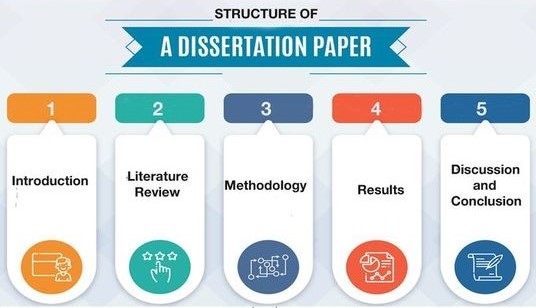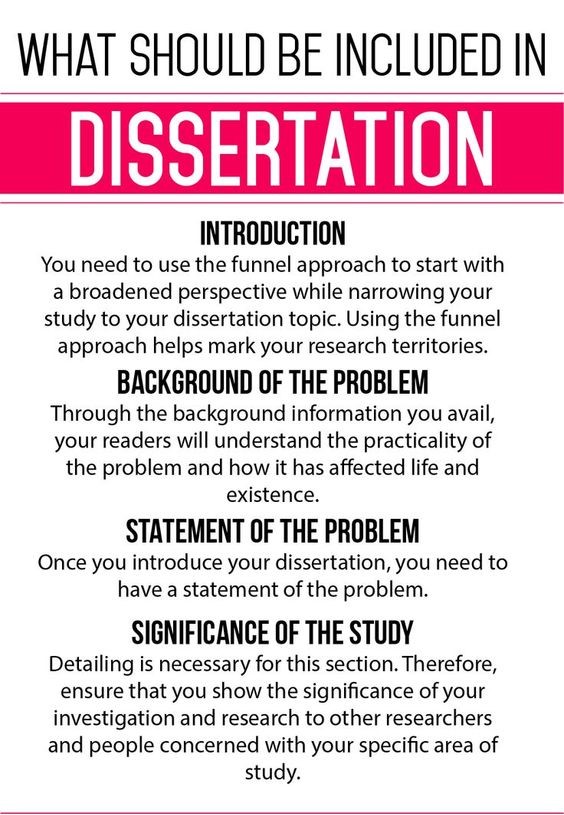The dissertation is a monumental task in the academic journey, often viewed as a daunting labyrinth of research, writing, and analysis. However, navigating this complex endeavor becomes significantly easier with a clear understanding of the dissertation structure. This guide provides a comprehensive road-map, outlining the essential elements and organization of a dissertation. The article also offers tips to empower you to craft a compelling and impactful dissertation that showcases your scholarly expertise.
The Purpose of a Dissertation
A dissertation is primarily a scholarly work that presents a significant original contribution to knowledge within a specific field. It demonstrates your ability to conduct independent research, critically analyze data, and articulate your findings in a clear and concise manner. A well-crafted dissertation serves the following purposes:
- Demonstrate Expertise: It showcases your in-depth knowledge and understanding of a specific research area.
- Contribute to Knowledge: It presents original research findings that add to the existing body of knowledge within your field.
- Develop Critical Thinking Skills: It fosters the development of critical thinking, analytical, and problem-solving skills.
- Prepare for Future Research: It lays the foundation for future research endeavors by identifying gaps in knowledge and proposing new areas of inquiry.
The Essential Components of a Dissertation Structure
The dissertation typically follows a structured format, divided into distinct sections that work together to build a compelling argument for your research findings. Understanding the purpose and function of each component of the dissertation structure is crucial for creating a cohesive and impactful paper.

- Title Page
The title page provides the essential details of your dissertation, including the title, your name, the institution, and the date of submission. The title should be concise, informative, and accurately reflect the focus of your research.
- Abstract
The abstract, typically limited to a specific word count, provides a concise overview of your dissertation. It summarizes the research question, methodology, key findings, and the implications of your research.
- Table of Contents
The table of contents provides a detailed outline of the dissertation, listing all chapters, sections, and subsections with their corresponding page numbers. This serves as a roadmap for the reader, allowing them to navigate the dissertation effectively.
- List of Tables and Figures
This section includes a separate listing of all tables and figures used in the dissertation, each with its corresponding title and page number. That helps readers to locate specific data representations within the text quickly.
- Introduction
The introduction serves as the foundation for your dissertation, laying out the context and purpose of your research. A well-crafted dissertation introduction should comprise the following elements.
- Background Information: Provide a brief overview of the broader research area and its significance.
- Statement of the Problem: Clearly identify the research problem, explaining its importance and the gap in knowledge it addresses.
- Research Question(s): Formulate specific research questions that guide your investigation and provide a clear focus for your dissertation.
- Literature Review: Synthesize existing research related to your topic, highlighting key findings, gaps, and potential areas for further investigation.
- Hypotheses or Research Objectives: State the expected outcomes of your research or outline the specific objectives you aim to achieve.
- Significance of the Study: Articulate the potential impact of your research on the field, including its theoretical, practical, or societal contributions.
- Methodology
The methodology chapter describes the research design, methods, and procedures used to collect and analyze data. The chapter should cover the following elements.
- Research Design: You should clearly explain the chosen research design (e.g., experimental, qualitative, mixed methods) and justify its appropriateness for your research question.
- Participants: Describe the population and sample used in your study, including participant characteristics, recruitment methods, and ethical considerations.
- Data Collection Methods: Outline the specific instruments or techniques used to gather data (e.g., surveys, interviews, observations, experiments).
- Data Analysis Techniques: Explain the methods used to analyze the data (e.g., statistical analysis, thematic analysis, content analysis).
- Ethical Considerations: Discuss the ethical procedures followed to protect participants, ensuring informed consent, confidentiality, and anonymity.
7. Results
This chapter presents the findings of your research, clearly and objectively. Your dissertation's results section should include the following;
- Descriptive Statistics: You should present relevant descriptive statistics that summarize the collected data (e.g., means, standard deviations, frequencies).
- Inferential Statistics: If applicable, present inferential statistical tests used to analyze the data and draw conclusions about the relationships between variables.
- Qualitative Findings: If using qualitative methods, present themes, patterns, and insights derived from the data analysis.
- Tables and Figures: Use tables and figures to visually represent key data and findings, enhancing clarity and understanding for the reader.
8. Discussion
This chapter provides a comprehensive interpretation of your research findings, relating them back to the existing literature and addressing your research questions. It includes:
- Summary of Findings: Restate the key findings of your research in a clear and concise manner.
- Interpretation of Results: Explain the meaning of your findings in the context of the literature, highlighting their significance and contributions.
- Limitations of the Study: Acknowledge the limitations of your research design, methodology, or data analysis, and discuss their potential impact on your findings.
- Implications for Future Research: Suggest any potential areas for further studies based on your findings. Those suggestions should address gaps in knowledge and propose new directions for inquiry.
9. Conclusion
The conclusion summarizes the key findings, reiterates the significance of your research, and leaves the reader with a lasting impression. It should include the following key elements.
- Summary of Key Findings: Restate the major findings of your dissertation, emphasizing their contributions to the field.
- Contribution to Knowledge: Clearly articulate the specific ways your research adds to the existing body of knowledge.
- Implications for Practice, Policy, or Future Research: Discuss the practical, theoretical, or societal implications of your findings and suggest potential applications for future research.
10. References
This section lists all sources cited within the dissertation, following a specific referencing style (e.g., APA, MLA). Ensure consistency in formatting and accuracy of citations.
The Process of Dissertation Writing
The writing process should follow the correct dissertation structure to ensure coherence, clarity, and impact.

- Develop a Detailed Outline: Before beginning to write, create a detailed outline that maps out the structure of your dissertation, including chapter headings, subheadings, and key points to be addressed in each section.
- Start with the Introduction and Literature Review: Begin writing with the introduction and literature review, establishing the foundation for your dissertation.
- Methodically Write Chapters: Complete the methodology, results, and discussion chapters, providing a clear and compelling narrative of your research process and findings.
- Revise and Edit: Revise your work multiple times, focusing on clarity, conciseness, and coherence. Seek feedback from advisors, peers, or professional editors.
- Proofread Carefully: Before submitting your final draft, carefully proofread your dissertation for errors in grammar, punctuation, and formatting.
Tips for Crafting a Powerful Dissertation
While structure provides the essential framework, crafting a powerful dissertation requires more than just organization. Consider these additional aspects:
- Clear and Concise Writing: Use clear and concise language, avoiding jargon or overly complex sentence structures.
- Strong Argumentation: Present a clear and logical argument for your research findings, supporting your claims with evidence and analysis.
- Engaging Narrative: Engage the reader with a compelling narrative that highlights the significance of your research and its potential impact.
- Visual Aids: Use tables, figures, and other visual aids to enhance clarity and understanding, making your data more accessible to the reader.
- Ethical Considerations: Address ethical considerations throughout your dissertation, demonstrating a commitment to research integrity and participant welfare.
Final Thoughts
The dissertation is a culmination of your academic journey, showcasing your expertise and potential as a scholar. By understanding the right dissertation structure, employing effective writing practices, and committing to a rigorous research process, you can create a dissertation that stands as a testament to your intellectual prowess and scholarly contribution. In case you may still have difficulties in writing dissertations, do not hesitate talk to us at ExemplaryDissertations for professional dissertation writing help. We also provide the best academic writing services for essays and research papers.